It may happen that despite your efforts, your projects don’t bring the desired outcomes and sometimes even fail. The reasons vary, but improper resource allocation is one of the most common causes. In this article, we’re presenting the most significant indicators of bad resource allocation and resource allocation issues as well as suggesting tips on how to improve it with a resource management solution. Read further to consider the most common resource allocation problems, which will help you estimate the level of your resource allocation and take measures to advance it.
Sign 1: Uneven workload (overloaded and underloaded employees).
Your resources are allocated improperly if some of them are overwhelmed with too many tasks, while others, who have the same skills, are idle. This resource allocation problem hampers optimal workflow and decreases overall performance. Even one overloaded resource or the one that doesn’t work according to their capacity negatively affects the whole group. Due to the fact that projects are interdependent in a multi-project environment, this can create bottlenecks that will jeopardize the success of all of them.
The key to employee productivity and excellent project results is balanced workload. But if overload can be rather easily noticed, underload is usually invisible: people won’t ever let management know that they have nothing to do being afraid of extra tasks. Sometimes this sign is really difficult to notice and a resource management solution’s capabilities are required.
Read more: Intaking More Projects in Aerospace and Defense: How Resource Management Solution Can Help.
Sign 2: Disengaged and unmotivated people.
Poor resource management usually results in overwhelming resources. Overload leads to disengagement, loss of motivation, and results in burnout. According to the Deloitte burnout survey, 77% of employees have experienced burnout at their workplace. The WHO emphasizes the following three symptoms of employee burnout:
- feelings of energy depletion or exhaustion;
- increased mental distance from one’s job or feeling negative towards one’s career;
- reduced professional productivity.
As a result, people experiencing burnout, lose interest in their job, become passive and unfocused, which for sure negatively affects their results at work, and cannot but impact the outcomes of the projects they work on.
So, this is the second sign of bad and inefficient resource allocation, which is a result of regular overload that hasn’t been timely noticed by a resource manager or a team lead.
Besides, constant idleness can result in boreout, which is an antonym or burnout, when a specialist feels undervalued and can’t see any results of their work.
Both phenomena can happen as a result of bad resource allocation: when easy tasks are assigned to a highly-skilled employee, or on the contrary, when difficult tasks are assigned to an inexperienced team member.
Sign 3: Regular mistakes.
Let’s consider the third resource allocation problem example. Everyone makes mistakes, but if they happen on a regular basis, it’s a signal that something in the team is wrong. Errors usually occur when a resource is working on many tasks simultaneously, switching from one activity to another, without being focused on anything certain.
Another case of inefficient allocation of resources is when an employee is assigned to a task that doesn’t correspond to their skills or experience level, as we described in the subsection above. In other words, if team members don’t have enough knowledge to do the task, this results in a low quality of their work and constant mistakes (besides the burnout).
Every project team member should work on the tasks that match their competence; otherwise an experienced and highly-skilled person will get bored of simple assignments, while a less experienced employee will be overwhelmed with difficult tasks. As a result, in both cases their performance will be reduced in the long run.
Sign 4: Regularly missed due dates.
A problem of missed project due dates starts with the missed milestones. Dr. Goldratt stated that it doesn’t matter when the task is completed, it matters when the whole project is completed, still project tasks should be completed as soon as possible and milestones should be delivered on time. Regularly missed deadlines can’t be ignored by a resource/project manager.
Besides, even one task can block the whole workflow and lead to project failure. Especially it’s relevant for multi-project environments where tasks are prioritized according to the dependencies between projects.
Deadlines can be missed for the following reasons:
- when resources are overloaded and just can’t cope with their to-do lists,
- when tasks are assigned regardless of employee’s experience and competence,
- when task priorities are unclear or absent;
- in case of improper task estimations.
If the first two resource allocation problems in project management are described in the sections above, the latter two should be explained.
When priorities are unclear or absent, your resource allocation won’t ever be efficient. To allocate your people properly, you should first prioritise assignments across all projects in your environment.
Besides, when too much time is given for a task, this may cause Student syndrome and Parkinson’s law effect. Student syndrome occurs when too much time is given for a task, and an assignee procrastinates because they think they have a lot of time. As a result, they fail to complete it on time. Parkinson’s law effect manifests itself in prolonged time durations: if a person is given twice more time than they need, they will use it anyway. That is why the amount of work should be estimated, not the time it will take to complete the task.
Sign 5: Failed projects and unsatisfied clients.
Project failure is the last sign that means that your resource allocation is wrong. Besides, it means that all other signs have been ignored. According to 2021 State of Project Management Report by Wellingtone, only 34% of projects are delivered on time and within budget. Not to find yourself among these 34%, pay close attention to the way your resources are loaded, how they cope with their tasks, and take necessary measures as soon as you notice some of the signs described above.
Improving Resource Allocation with a Resource Management Solution
Sometimes some of the signs are really difficult to notice, which is why we recommend using a resource management solution that has everything necessary to ensure efficient resource allocation, performance tracking, and helps deliver your projects always on time and within budget. It will definitely help you improve resource allocation and boost your teams’ productivity.
Read more about the importance of resource allocation, its challenges, and recommendations in our blog post: 4 Tips on Efficient Resource Allocation in a Multi-Project Environment.
Let’s take a look at the capabilities of a modern resource management solution through the example of Epicflow – multi-project resource management software.
It lets you keep your team members focused and their workload balanced.
This is possible thanks to automatic prioritization of tasks across all projects in your organization. In such a way, every team member has their personal lists of prioritized tasks that makes them stay focused on one assignment at a time. This not only prevents multi-tasking and overload, but also provides clearness and transparency to an organization: everyone can see each other’s task lists and the progress they’re making.
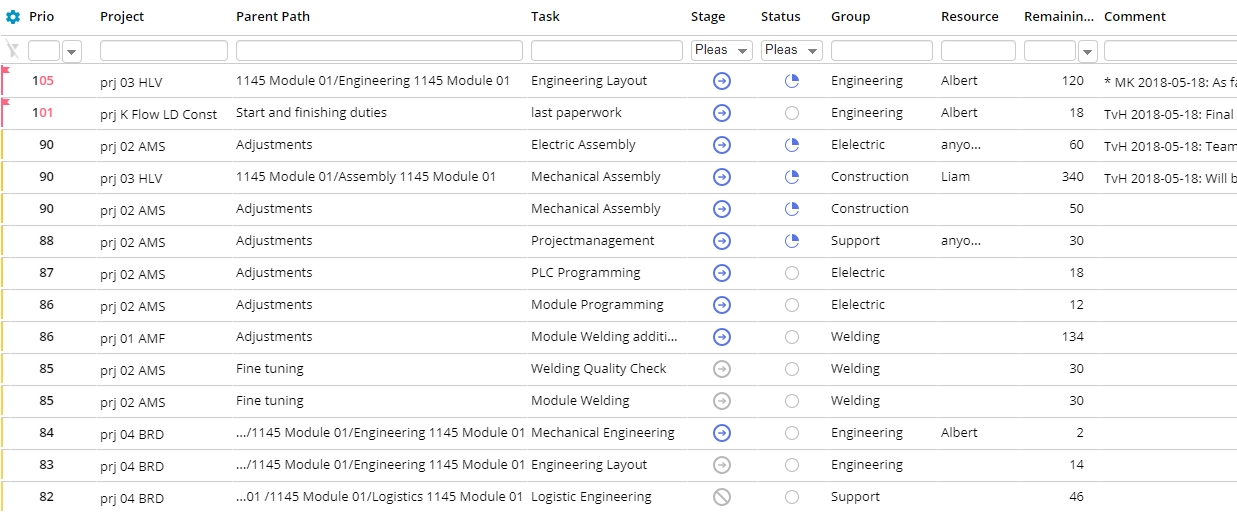
What is also important, if any changes to a project environment happen, task priorities are recalculated right away, so each team member has up-to-date information about their current and upcoming assignments regardless of any transformations.
It manages your resources’ skills and availability.
Making the right resource work on the right task is sometimes pretty challenging, especially when a company has multiple projects to run simultaneously. A resource manager can’t keep all necessary data in mind, and here a resource management solution like Epicflow is of great help. With its Competence Management feature, you can add an unlimited number of competences to resources and tasks and then use this data for efficient resource allocation. How exactly does it work?
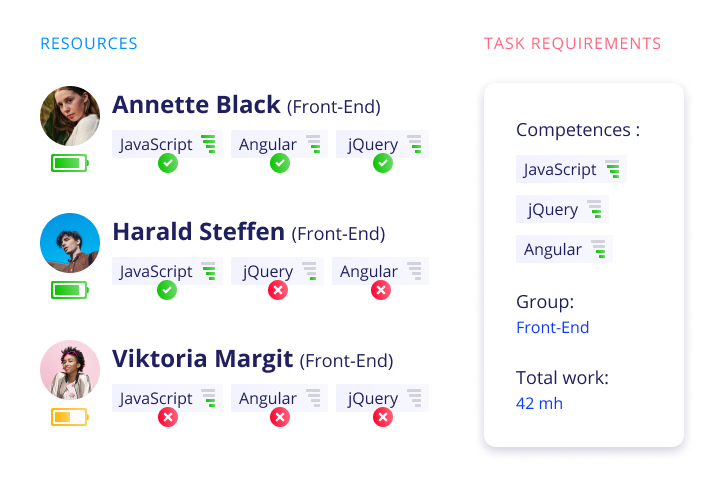
You add competences (skills) to every team member’s User Card and specify their level from 1 to 5. Then you attribute competences and identify their levels to each task to denote the expertise that an employee should have to complete it. Then you can use this data to find a perfect match and assign the right resource to the right task.
Besides, you can enable a Resource Allocation Advisor, that automatically suggests the best project team members for tasks based on the analysis of their competences and also taking into account their capacity and availability.
As a result, your resources work exactly on the tasks that correspond to their level of expertise. This protects them from burnout and boreout and lets you get flawlessly completed tasks by your engaged resources.
It lets you track your employees’ performance.
Epicflow suggests a number of tools to check team performance: Bubble graph, Timesheet, Burnup chart, and Historical load graph.
- Bubble graph is a tool that shows all project details and the progress against time constraints. It has project and budget views where you can see corresponding data. The project view shows if you’re in terms of your schedule regarding buffer time (time constraints), while the budget view demonstrates whether you’re in the limits of the scheduled budget (budget constraints).
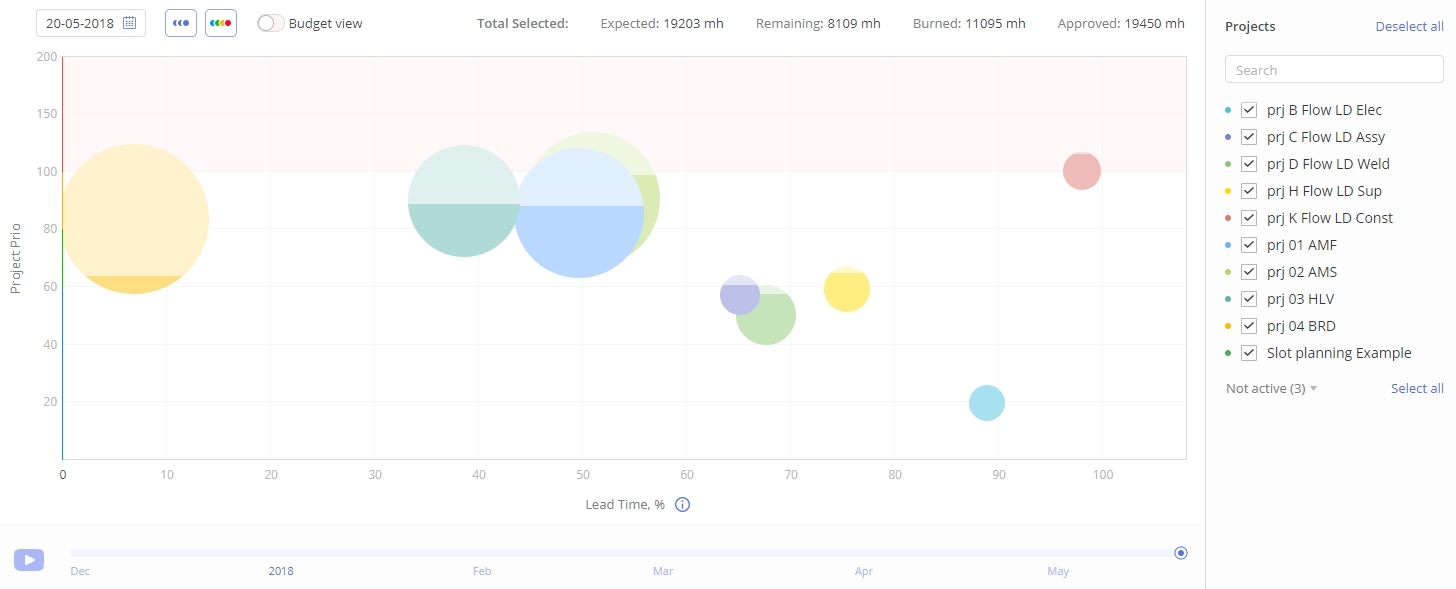 Read more: Bubble Graph: Critical Chain Fever Chart Re-Imagined
Read more: Bubble Graph: Critical Chain Fever Chart Re-Imagined
- In the Timesheet, you can see detailed information about your resources’ working hours and the output over a certain period. You can compare the number of planned and spent hours to evaluate the productivity of your teams.
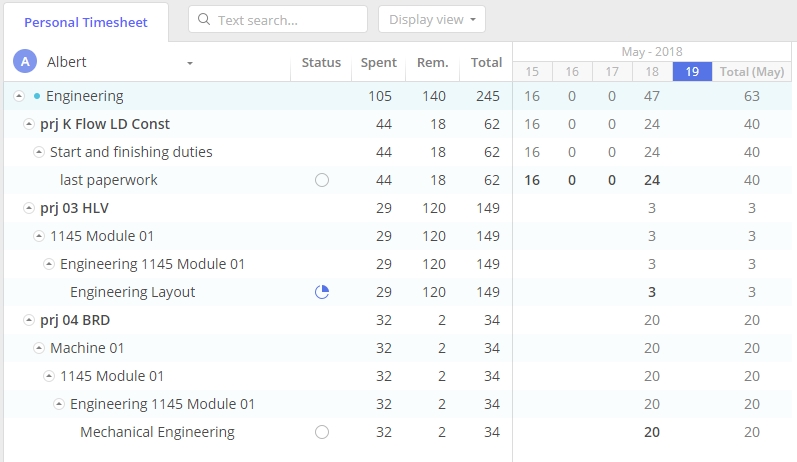
- You can also see the output produced by the team members graphically on the Historical load graph. It compares completed work with employees’ capacity within a certain period. Besides, there you can also see the amount of work that has been completed according to the plan and with a delay.
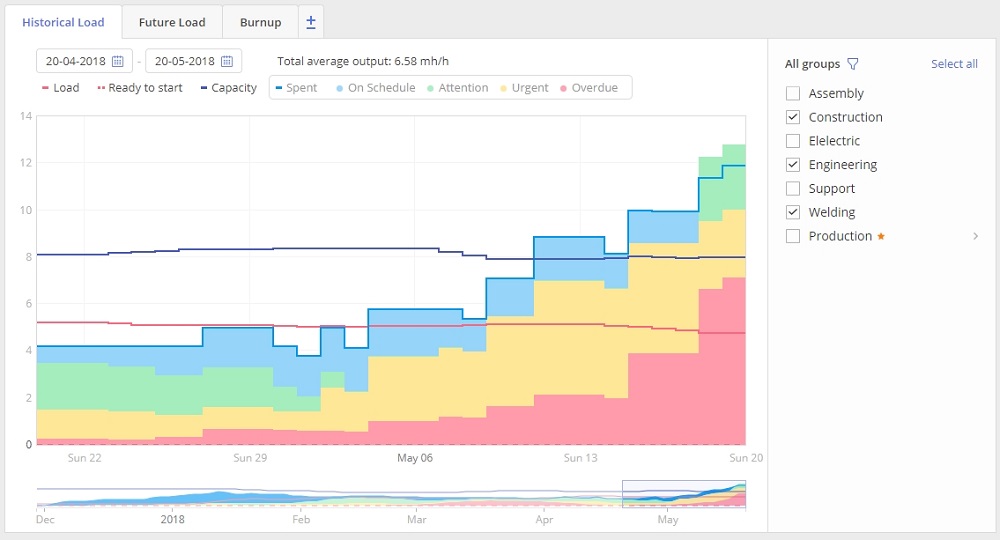
- The Burnup chart shows the amount of project work that has been done and how much is left.
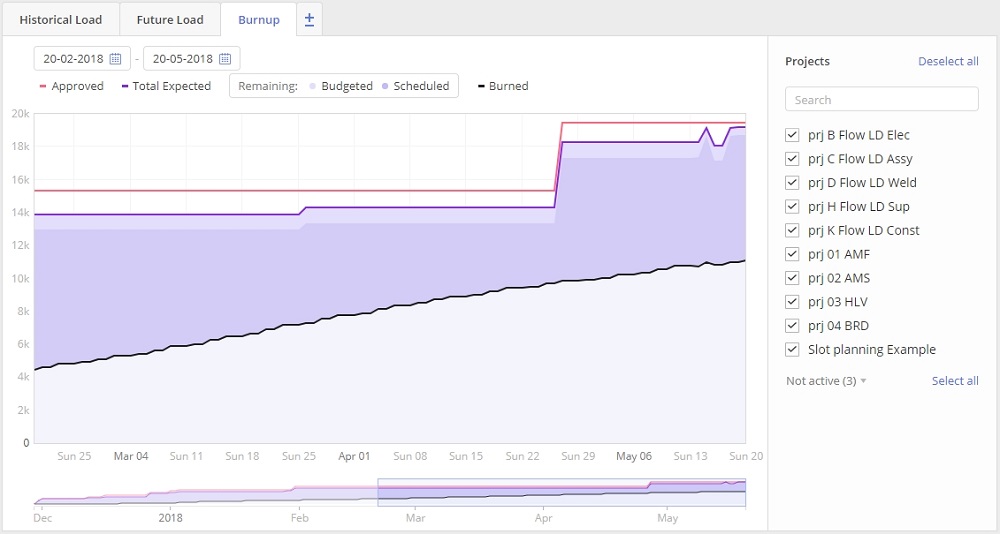
It detects bottlenecks before they arise.
You can predict the workload of your resources for any date in the future and see it on the Future load graph. If your resources are allocated improperly, Epicflow will let you know when a bottleneck may appear. It will show you if some of your resources are likely to get overloaded or idle, so that you can adjust their workload accordingly to avoid any negative consequences as your projects further progress.
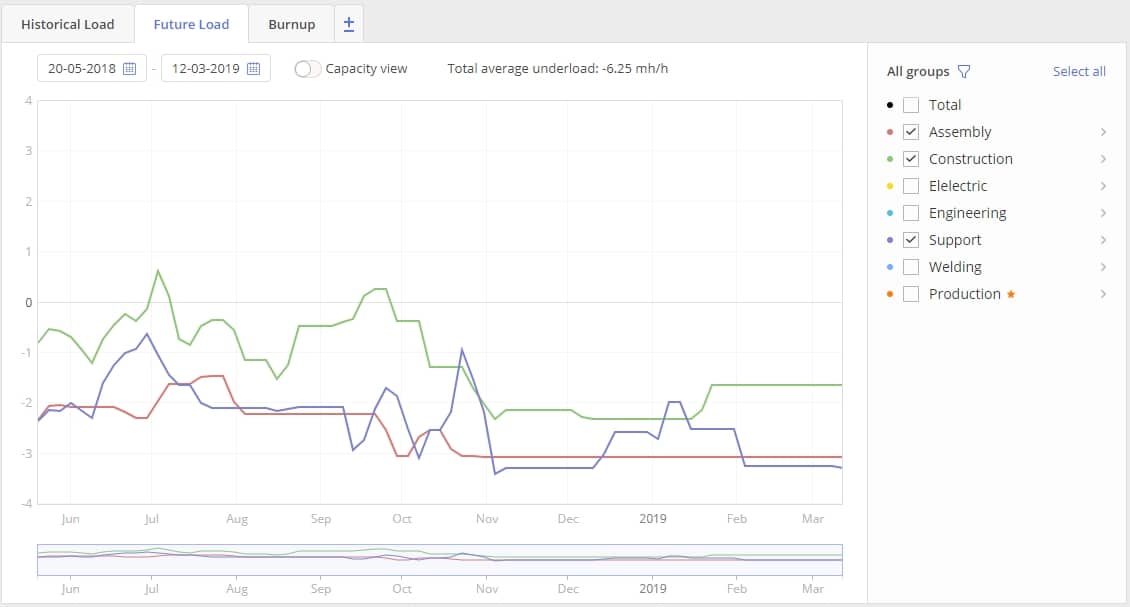
It prevents your projects from failure.
This is achieved with the help of the AI-driven features that analyze all project-related data and provide you insights into the further flow of your projects. With the above-mentioned Future load graph, you can timely react to any threats to your project environment. Besides, Epicflow helps you make flawless project decisions: instead of making ad-hoc decisions, you can implement any changes in the simulation mode, see their impact, and put them into life as soon as you’re satisfied with the obtained results. What-if analysis is your personal time machine that gives you flexibility, freedom, and time for the decisions that will definitely bring your projects to successful delivery.
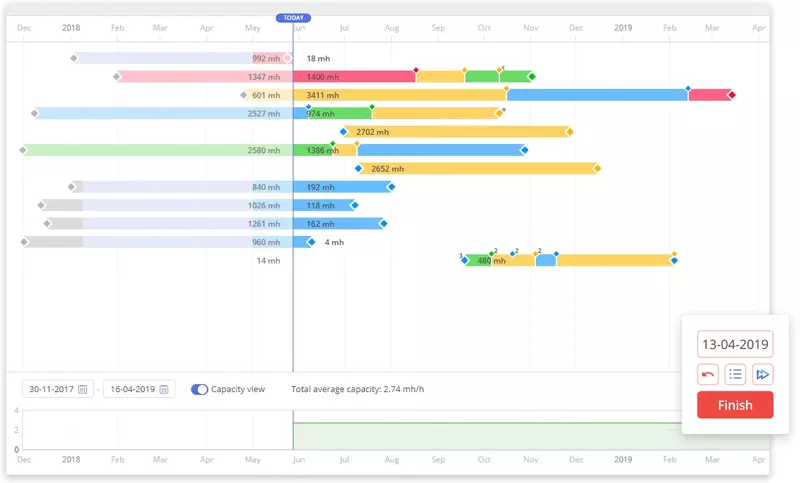
Conclusion
Therefore, if you see any of the signs of improper resource allocation
- overloaded or idle employees,
- disengaged and unmotivated people,
- regular mistakes,
- regularly missed due dates,
- failed projects and unsatisfied clients,
you should take measures to improve your resource management approach.
Here’s how a resource management solution can help:
- It optimizes your resources’ workload.
- It helps you assign the right resources to the right tasks.
- It shows teams’ performance over time.
- It prevents your environment from bottlenecks and gives room for flexibility.
- It protects your projects from failure.
Would you like to learn how exactly Epicflow can help you manage your resources as efficiently as possible and reach the desired outcomes? Book a call with our experts and we’ll not only tell you more about the ways our approach to resource management can change things for better at your company but also show you our features in action.

